Welcome to Food Easy Recipes journey of mastering the art of Risotto a la Milanese! As an English-speaking food enthusiast, I have always been captivated by the rich history and origins of this iconic Italian dish. Originating from the Lombardy region of Italy, Risotto a la Milanese is a culinary masterpiece that has stood the test of time. In this blog, we will delve into the fascinating history and origins of this dish, explore the essential ingredients and techniques required to create the perfect Risotto a la Milanese, and uncover the tips and tricks that will elevate your cooking skills. So, join me as we embark on this delicious adventure and discover the secrets behind this beloved Italian classic.
The History and Origins of Risotto alla Milanese: Exploring its Lombardy Roots
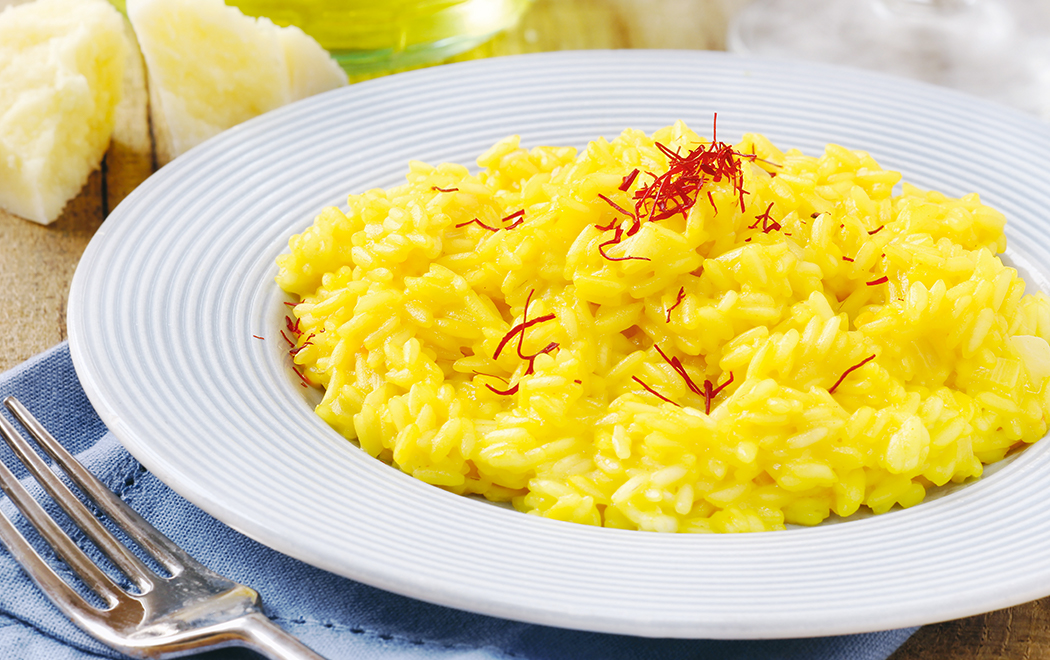
Risotto alla Milanese is a classic Italian dish that has its roots in the Lombardy region. This rich and flavorful dish has a history that dates back to the 16th century.
The origins of risotto alla Milanese can be traced back to the saffron trade in Milan. Saffron, a luxury ingredient at the time, was used to give the risotto its characteristic yellow color and unique flavor. The dish was originally made using saffron, Arborio rice, butter, onion, white wine, and beef or vegetable broth.
Over time, risotto alla Milanese became a staple in Lombardy cuisine and spread to other regions in Italy. It is often served as a main course or as a side dish to accompany meat or fish. The dish is known for its creamy texture and rich, umami flavor.
The traditional recipe for risotto alla Milanese includes Arborio rice, butter, onion, white wine, beef or vegetable broth, and Parmesan cheese. The dish is typically cooked slowly, with the rice gradually absorbing the broth and becoming tender. This slow cooking process allows the flavors to meld together and creates a creamy and delicious dish.
Risotto alla Milanese is a classic comfort food that is enjoyed by both locals and visitors to Lombardy. Its history and unique flavors make it a beloved dish in Italian cuisine. Whether you are a food enthusiast or simply looking to try something new, risotto alla Milanese is a dish worth exploring.
Ingredients and Techniques: Mastering the Perfect Risotto a la Milanese
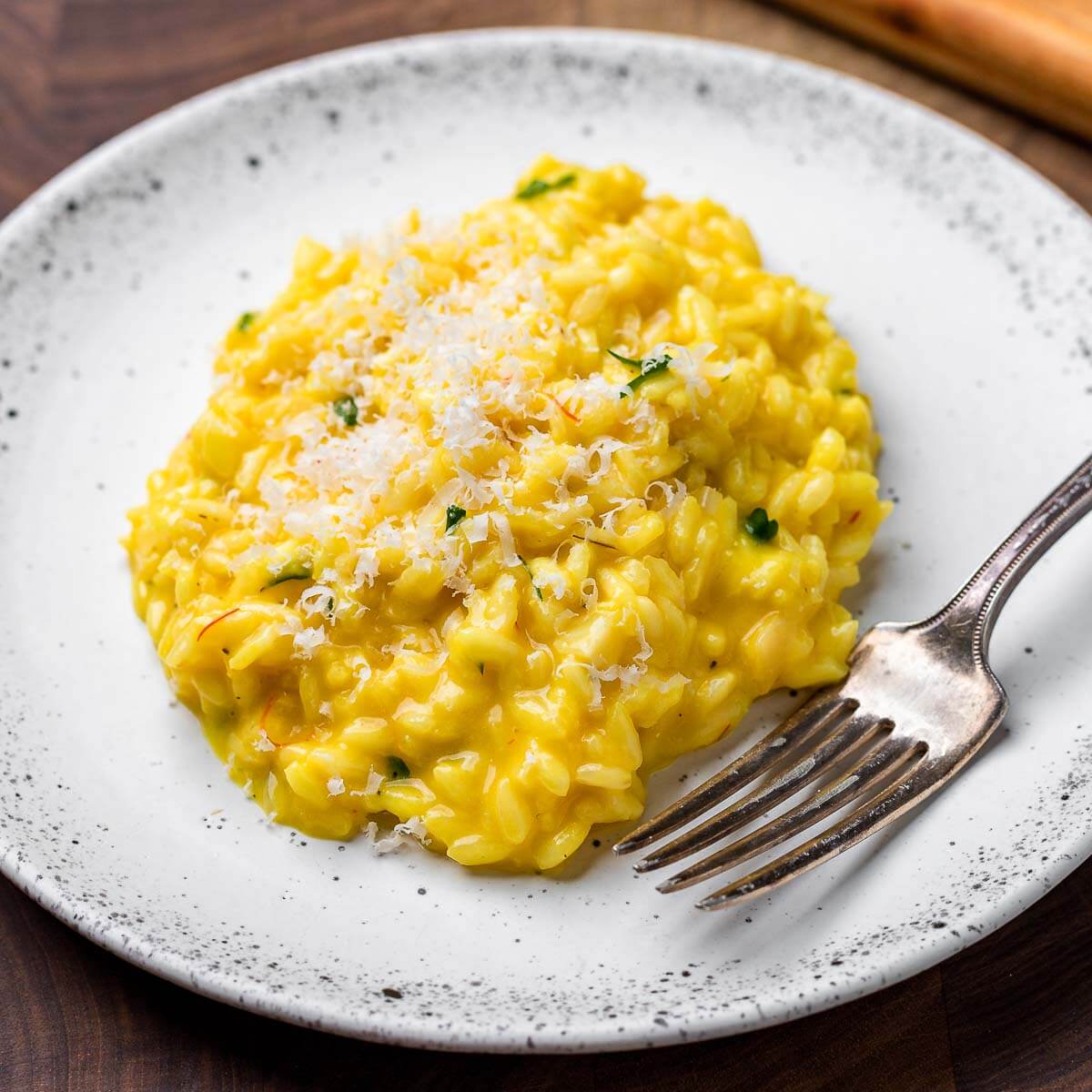
Now that we have discussed the background and history of risotto alla milanese, let’s dive into the key ingredients and techniques that are essential to mastering the perfect dish.
One crucial technique in making risotto is washing the rice with stock. This process creates a starchy liquid that adds thickness and creaminess to the final dish. By preserving the surface starches of the rice, there is less need for constant stirring during the cooking process, making it easier to achieve a creamy texture.
Another technique that elevates the texture of the risotto is the addition of whipped cream at the end. This not only enhances the creaminess but also adds a lightness to the dish, creating a velvety mouthfeel.
Of course, the star ingredient of risotto alla milanese is saffron. While saffron is known for its high price, it is used sparingly in saffron-centric dishes like this one. Only a couple of small pinches are needed for the whole batch, making it a worthwhile investment for the luxurious flavor it imparts.
Despite its reputation as an expensive ingredient, the cost of using saffron in homemade risotto is relatively low. Given that only a small amount is required, typically less than $5 worth for four full servings, it won’t break the bank. While saffron may be more expensive than gold ounce for ounce, its weightlessness means that, for the home cook, it is a manageable cost.
By understanding these key ingredients and techniques, you’ll be able to create a risotto alla milanese that is rich, creamy, and luxurious without breaking the bank. In the next section, we will explore the specific steps and tips for preparing this classic dish.
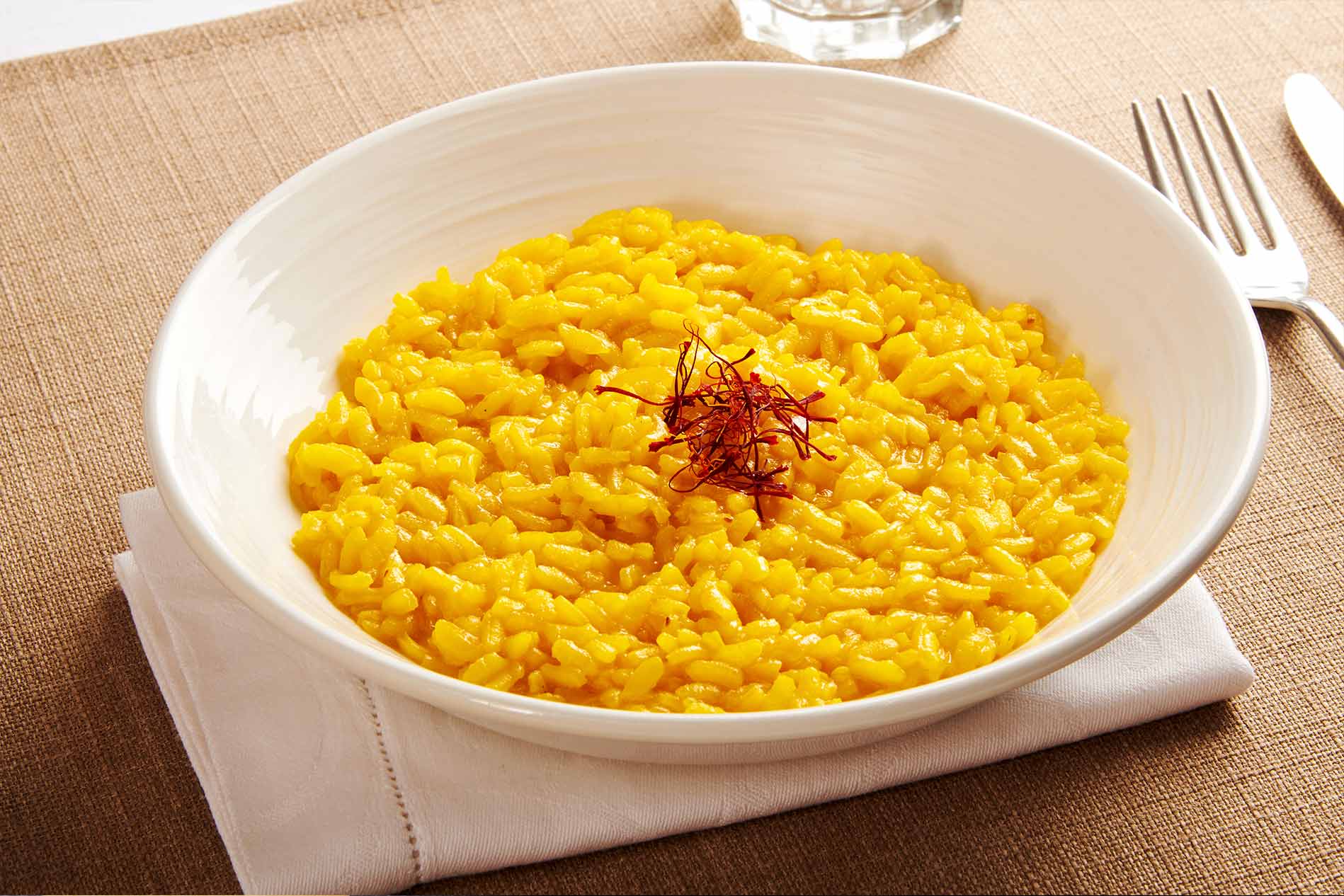
Risotto alla Milanese
Ingredients
Method
- In a saucepan, prepare gravy. At low temperatures keep the broth warm as long as you prepare the risotto.
- In a saucepan heat the olive oil and saute the ham and onion. Once the onions soften, add the rice and stir with wooden spoon. Once rice is translucent, add the alcohol. Add 1 cup. broth, stirring constantly. Once you save the broth, add another 1 cup. broth and continue stirring. Continue adding broth until the cup of cooked rice. We will need approximately 22 to 25 minutes.
- Just before we finish the process of adding to the risotto in saffron broth and add to our food. Remove the saucepan from heat and add butter, parmesan and season. Serve immediately.
Video
Notes
Tips and Tricks for Cooking Risotto a la Milanese: From Arborio to Carnaroli Rice
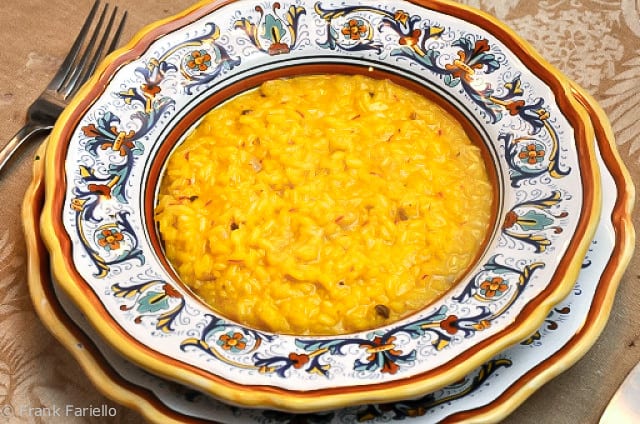
Now that you have learned about the different types of rice and cooking techniques for making risotto a la Milanese, let’s dive into some tips and tricks that will help you perfect this classic Italian dish.
First and foremost, it’s important to use high-quality ingredients. Opt for a good quality broth or stock, as it will greatly enhance the flavor of your risotto. Additionally, saffron is a key ingredient in risotto a la Milanese, giving it a vibrant yellow color and a distinct flavor. Make sure to add the saffron early in the cooking process to allow its flavors to infuse into the rice.
When cooking risotto, it’s crucial to achieve the perfect texture. Risotto should be cooked al dente, with a slight bite to the rice, rather than overcooked and mushy. To achieve this, test the rice for doneness by tasting it periodically and adjusting the cooking time accordingly.
The final step in making risotto is known as “mantecatura.” This involves stirring in butter and grated Parmesan cheese to create a velvety texture and add richness to the dish. Be sure to stir gently but consistently to evenly distribute the butter and cheese throughout the risotto.
While risotto a la Milanese is delicious on its own, don’t be afraid to experiment with different ingredients and flavors. Adding mushrooms, peas, or seafood can create unique variations of this classic dish. Serve risotto a la Milanese as a main course or as a side dish to accompany meats or seafood.
With these tips and tricks, you’ll be able to create a creamy and flavorful risotto a la Milanese that will impress your family and friends. So grab your Arborio or Carnaroli rice, saffron, and a good quality broth, and get ready to enjoy this classic Italian dish. Bon appétit!
Serving and Pairing Risotto a la Milanese: Unveiling the Best Accompaniments and Wine Choices
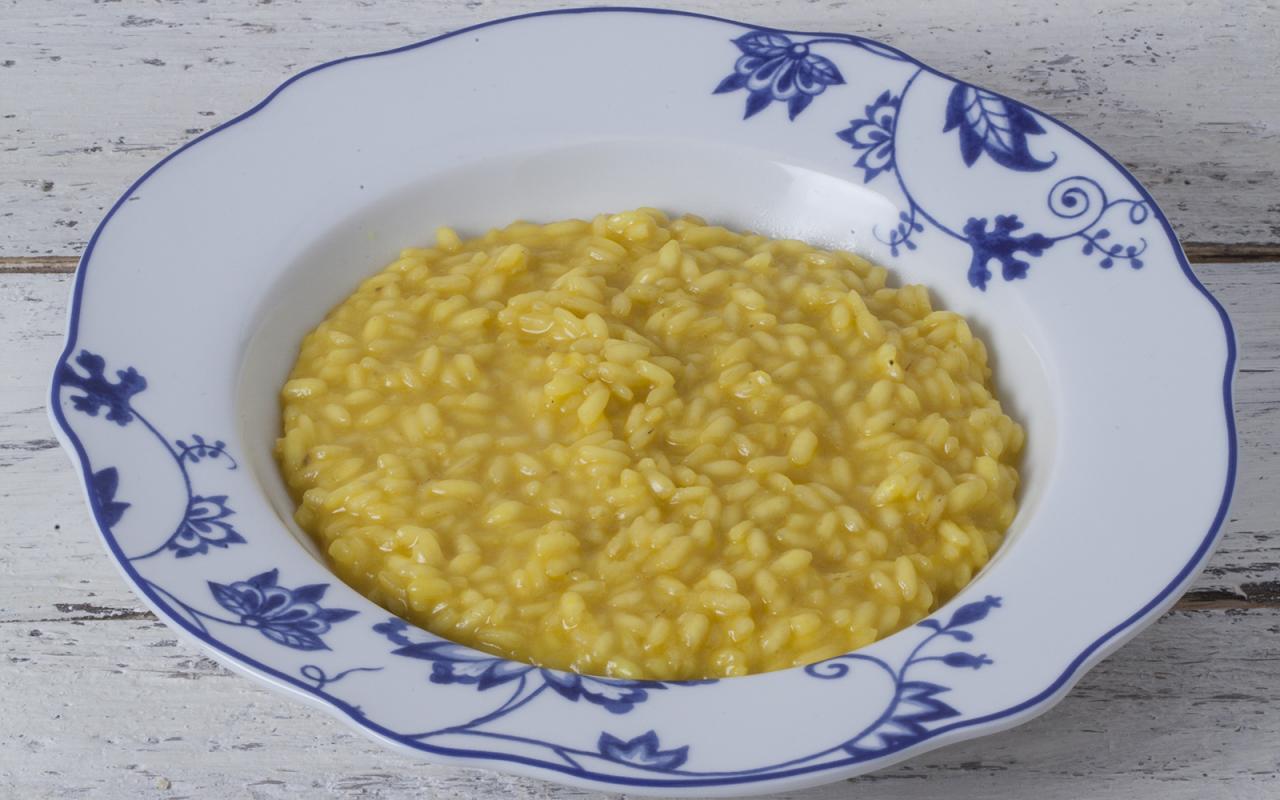
Now that we’ve explored the best accompaniments and wine choices for risotto, let’s take a closer look at serving and pairing the classic dish, Risotto a la Milanese.
Risotto alla Milanese is a traditional dish from the Lombardy region of Italy. It dates back to the mid-1800s and is known for its rich and creamy texture, vibrant yellow color, and distinct saffron aroma. The key ingredients in this dish include Arborio rice, beef stock, saffron, onions, shallots, butter, and white wine.
When it comes to serving and pairing Risotto a la Milanese, there are a few things to consider. First and foremost, the creamy sauce and saffron flavor call for a wine that can complement and enhance these elements. While it may seem counterintuitive, a red wine like Barbera can actually be a good match for this dish. The saffron in the risotto pairs well with the fruity and slightly acidic notes of the Barbera, creating a harmonious combination.
However, if you prefer white wine, there are also options that can work well with Risotto a la Milanese. A classic Italian white wine like Verdicchio, Pinot Grigio, or Pinot Bianco is recommended. These wines have a crisp and refreshing character that can balance the richness of the risotto while complementing its flavors.
When serving Risotto a la Milanese, it’s important to present it in a way that showcases its vibrant yellow color and creamy texture. Some chefs like Lidia Bastianich suggest using Carnaroli rice or Vialone Nano rice for a perfect risotto consistency. Others recommend adding beef bone marrow or roast beef juice to enhance the flavor.
To serve, you can garnish the risotto with unsalted butter, onion slices, or a drizzle of olive oil. The bright yellow stock, flavored with saffron, should be visible, with the rice suspended in the creamy sauce. The dish should be fragrant and visually appealing, inviting diners to enjoy its luxurious taste.
As with any wine pairing, it’s important to consider the specific flavors and ingredients in your Risotto a la Milanese when selecting a wine. Don’t be afraid to experiment and try different wine options to find your favorite pairing. Whether you choose a red wine like Barbera or a white wine like Verdicchio, the goal is to enhance the flavors of the risotto and create a memorable dining experience.
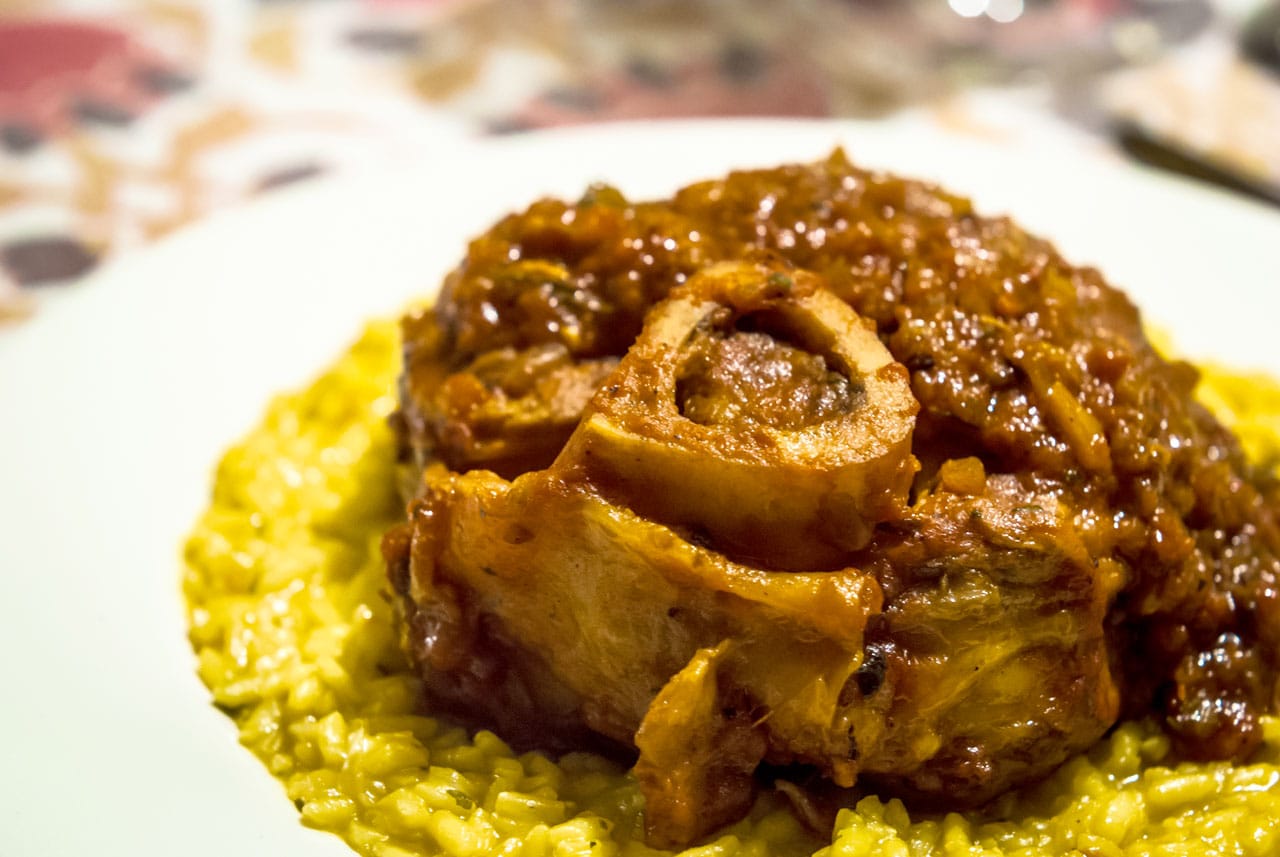
To Conclude
As we conclude our journey of mastering the art of Risotto a la Milanese, we have uncovered the rich history and origins of this iconic dish, explored the essential ingredients and techniques required to create the perfect risotto, and discovered the tips and tricks that will elevate our cooking skills. From its Lombardy roots to the perfect pairing of accompaniments and wine choices, Risotto a la Milanese is truly a culinary masterpiece that has captivated food enthusiasts around the world. So, armed with the knowledge and passion gained from this personal journey, let us continue to embrace the art of risotto-making and create memorable dining experiences for ourselves and our loved ones. Buon appetito!





